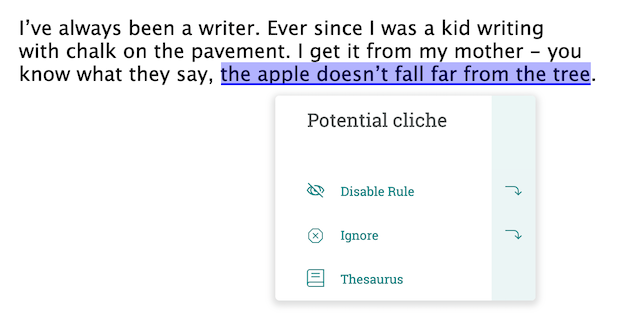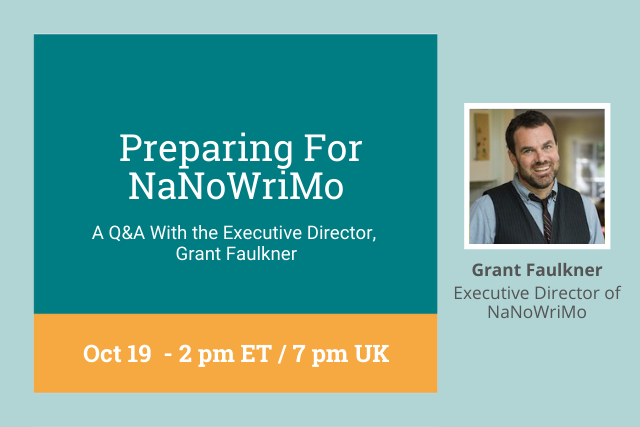
Writers spend the year gearing up to NaNoWriMo. But what do you do when it's over? Hopefully you'll get some sleep and relax for a bit. Catch up with family and friends who won’t have seen you in 30 days. Surely you remember your kids’ names, right?
Now it’s time to burst your bubble. The typical paperback novel is between 80,000 and 100,000 words long. Yes, you completed 50,000 words, and that’s an amazing achievement in 30 days. But 50,000 words does not a novel make.
The beauty of NaNoWriMo is that it releases you from worrying about what you’re writing, trying to make it perfect, and instead you just focus on getting words down on the page. And that is a serious accomplishment: 50,000 words in 30 days. NaNoWriMo hopefully taught you that when you’re not seeking perfection, you can get an amazing amount of words out instead of staring at a blank page.
So, sorry to be the bearer of bad news, but you’ve likely got more work ahead on that novel of yours.
Word Count Guidelines by Genre
Here’s an easy to reference list of average fiction book lengths by genre thanks to LitRejections.com:
- Crime: 90,000 to 100,000
- Mysteries/thrillers/suspense: 70,000 to 90,000
- Romance: 70,000 to 100,000
- Fantasy: 90,000 to 100,000
- Paranormal: 75,000 to 95,000
- Horror: 80,000 to 100,000
- Science fiction: 90,000 to 125,000
- Literary/commercial/women’s: 80,000 to 110,000
What Genre is Your NaNoWriMo Novel?
Depending on your genre, from the list above, you might have between 20,000 and 40,000 more words to write. And that’s the least amount.
This assumes you’re going the traditional publishing route. If you’re self-publishing, there are more lenient rules about word count, as some self-published works are novella length (around 50,000 words).
How Do You Flesh Out Your Novel to Meet Today’s Publishing Standards?
After taking enough time off, come back to your novel with fresh eyes. Below, we have suggested the key areas where you can strengthen and build up your novel, with links to further information about each area.
Theme
Complete this sentence: My NaNoWriMo novel is about… If you can’t easily explain the theme of your novel in one sentence, maybe you don’t actually have a theme.
Theme is the big picture of what your novel is about, not the plot points. It could be about death, fear, revenge, love, acceptance, really living, etc. For example, the novel The Great Gatsby is about the decline of the American Dream in the 1920s.
Plot
Writing 50,000 words in 30 days is bound to leave some gaping plot holes. Go back through your work and try to flesh those out. Make sure your story starts in the middle of the action and that the tension continues to increase until the final denouement.
Also, don’t forget to tie up any loose ends from sub-plots. Plot and sub-plot problems usually require the most revisions, so it’s good to get this out of the way early on.
Characterization
Then it’s time to focus on your characters. Are they fully-rendered 3-D personalities, flesh-and-blood human beings with flaws and imperfections and more noble characteristics?
World Building
Is your story set in current day London or maybe in South Africa in the 1940s? You’ll need to research to make sure even the smallest detail rings true to place and time.
On the flip side, if your story is set in the future or on a different planet, you have some serious world building to do.
Now is the time to tackle your story’s world and make it thoroughly and delightfully believable.
Fortunately, ProWritingAid have got your back.
Narrative Arc
Sometimes called the story arc, your narrative arc must have a beginning, a middle, and an end. The key is to ensure your story arc and your character’s arc (how your main character is changed over the course of the story) are intertwined so well that readers won’t know where one begins and the other ends.
Go through your manuscript and make sure your main character is confronted by plenty of action that changes her or makes her grow in some way.
Dialogue
Dialogue can be a tough one to make sound natural. Your best bet is to go through your novel and read the dialogue out loud. If it sounds natural, then it’s good to go. But if the dialogue sounds stilted, you must revise. You want it to roll off the tongue to be believable.
Intensive Technical Edits
Now it’s time to make your manuscript shine. Technical language problems like using abstract or vague words, overused words, sticky sentences, unnecessary adverbs, and more will make your manuscript scream “amateur.” These can be easily caught by running your manuscript through the ProWritingAid.com online editing tool or your ProWritingAid add-in in Microsoft Word, Google Docs or Scrivener.
When you're writing quickly (as you probably were all through NaNoWriMo) it’s easy to fall back on cliches when trying to get your thoughts out.

ProWritingAid's cliché report will highlight all of the potential clichés in your manuscript you you can correct them in one fell swoop. You'll end up with far more original prose as a result.
There are over 20 ProWritingAid reports that you can run, including the Summary Report, which will analyze your full text and give you the key actions you should take to improve your work.
ProWritingAid will catch these technical gaffes to help you strengthen and tighten your prose. You don’t want to skip this step. What you do want is your editor and publisher thoroughly impressed with the professional manuscript you present.
Time for a Professional Edit
Once you have tightened it up as much as you can, send it to your editor. He or she will help you polish your novel and get it in publishable shape, whether you’re self-publishing or following traditional methods.
Final Words
If you think the manuscript you painfully churned out during NaNoWriMo is just fine as it is at 50,000 words, you may be right. Here are some very famous novels that came out to be roughly 50,000 words:
- The Great Gatsby
- Fahrenheit 451
- The Invisible Man
- The Hitchhiker's Guide to the Galaxy
You do you. Don’t let us change your mind.
Happy writing!
Preparing For NaNoWriMo: A Q&A With the Executive Director, Grant Faulkner
November is fast approaching, and with it comes National Novel Writing Month, the writing challenge that asks you to write a 50,000 word novel in 30 days.
We've asked the ultimate NaNo expert—NaNoWriMo Executive Director, Grant Faulkner—to share his advice. Join us for a Q&A and get all your questions answered.


